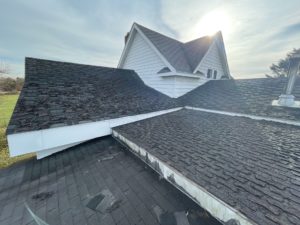How can I tell when my roof needs replacement?
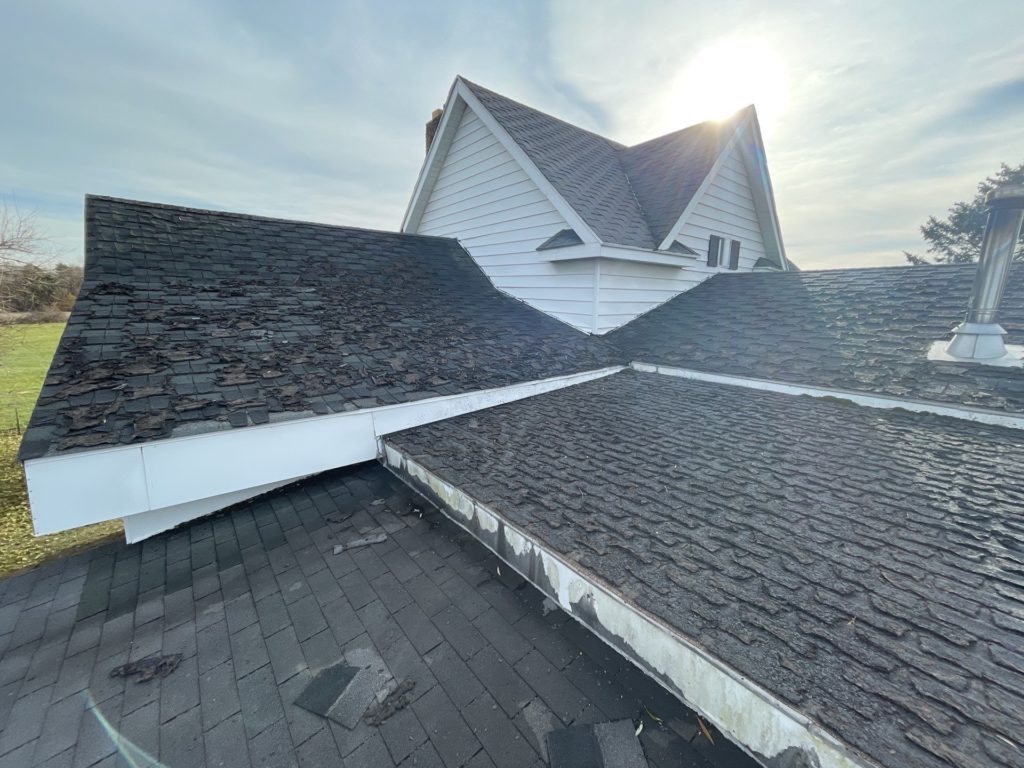
It’s easy for us to say a roof has reached the end of it’s life but how can a homeowner look and tell on their own? We’ve mentioned things briefly in a previous post but let’s get some visuals and information on this to better help you, the homeowner, know what to look for, what you’re seeing, and why.
Firstly, go outside, stand back and take a look. We know it’s obvious but it’s the best start. Many homeowners aren’t going to just climb on a roof and look around for lots of reasons. But you can stand back and just look. There’s many things you can easily see from ground level that may raise alarms that it’s time to start thinking about a new roof before a problem arises.
Is it Sagging?
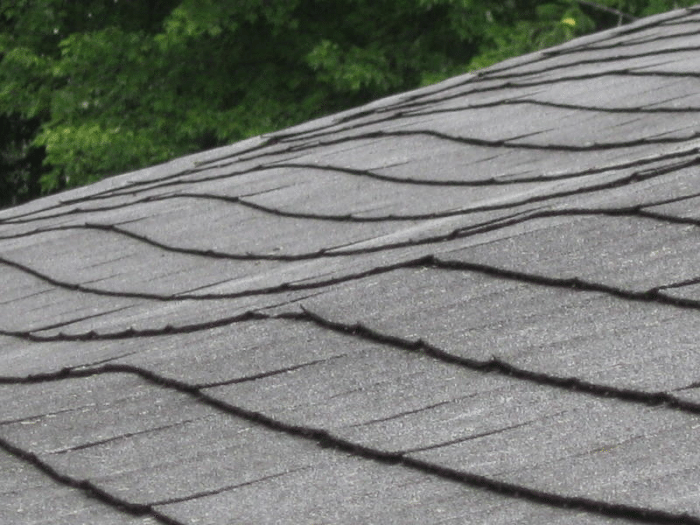
You know what it should look like. Nice straight lines, and water draining properly through eaves and downspouts. Is the roof line straight but the eaves sagging? Are there areas of ponding? Sagging is a sign of structural problems and rotted wood beneath your shingles. Rotted sheathing boards and fascia, or worse, rafters can be fixed but it can vary greatly from a simple board replaced to a roof needing to be torn off completely and new rafters and supports installed. Sagging roof areas also add risk to you as a homeowner should you decide to go onto the roof yourself for any reason to do maintenance, or an installer to add a satellite dish. A note: Here in Mid-Michigan, there’s lots of older homes that were built before the standards of today that have solid, but “wonky” roofs where an addition didn’t quite line up at the same angle when built, so a sagging area may not be as immediate a problem in those cases but is still reason to get it checked and repaired to current standards.
How do the shingles themselves look?
Curling Shingles
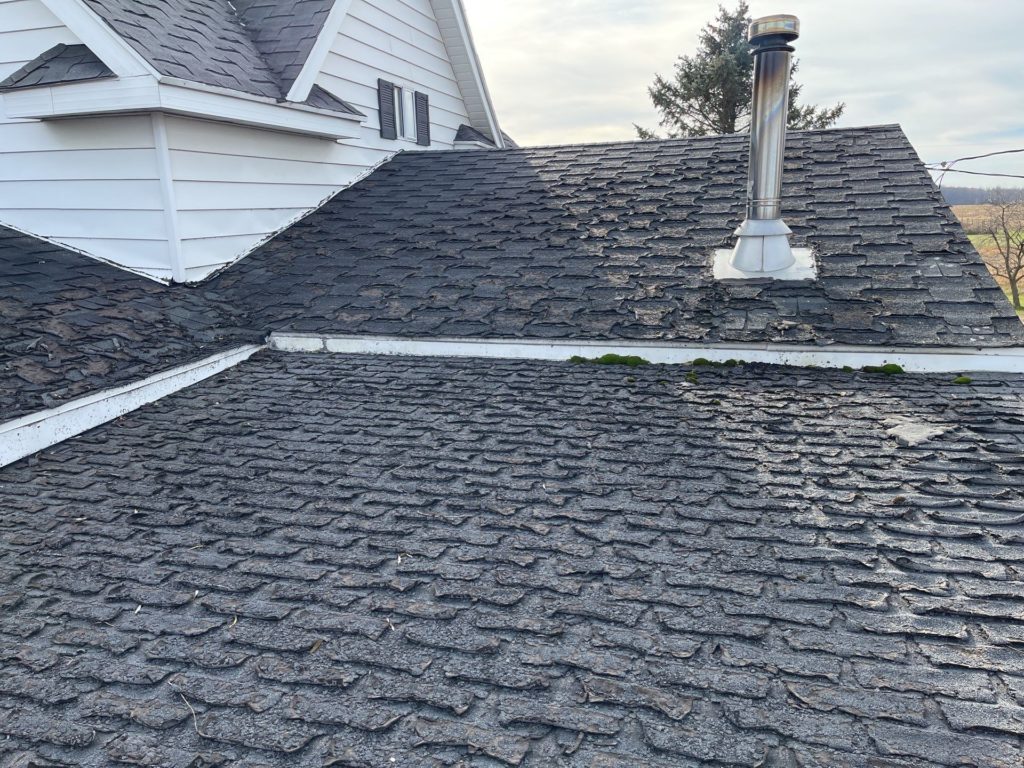
Curling Shingles. It can be from normal wear and tear or possibly low quality shingles. It can happen due to insufficient attic ventilation. In some cases multi-layer roofs, or shingle-overs, were installed (which we don’t do for warranty reasons) and the shingles weren’t as secure as they could have been. Here in the Thumb of Michigan, we see plenty where the shingles have just long surpassed their life. Our weather can be quite brutal on roofs between summer sun and winter ice. At this point like the images, the shingles are rather fragile compared to when they were installed and problems had already begun. Curled shingles can collect water and be caught by the wind easier. They afford all the right conditions for moss and algae to grow. Or as a result of poor ventilation, the roof decking may have been compromised by moisture and mold has begun forming underneath significantly reducing the life of the shingles. Regardless of why, if you see curling shingles on your roof, it’s time.
Cracked Shingles / Previous Repairs
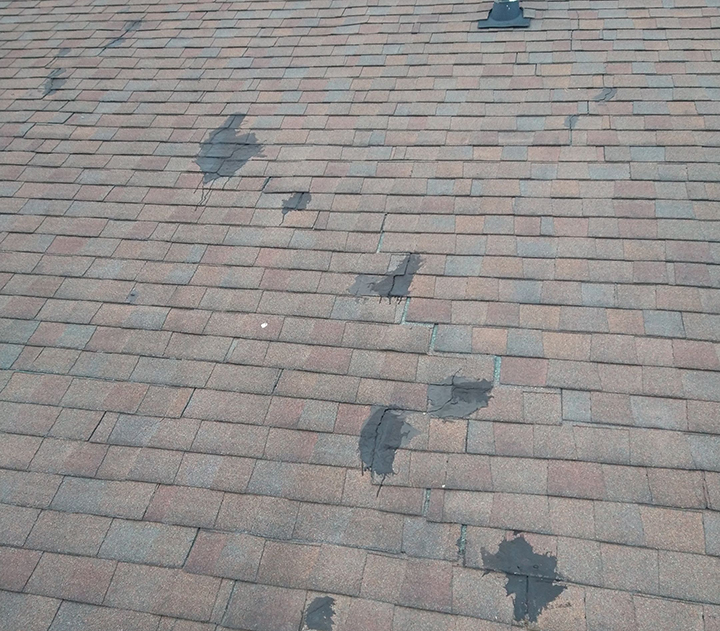
Seeing the cracks themselves may or may not be easily viewable from the ground depending on severity but the repairs done by previous homeowners or “quick & easy” repairmen are. Sure, a quick application of roofing tar can solve an immediate issue if water is finding it’s way in but it’s not a long term fix and if done improperly, or proper repairs done shortly thereafter, it can add to the problem down the line quicker than anticipated.
Shingles crack for some of the same reasons they curl. They exhaust their lifespan. The material breaks down as temperatures fluctuate and eventually split. Sometimes the wind can cause a crease over time and it inevitably cracks. A nasty hit of hail when the weather is cold can damage the shingles. Usually a cracked shingle leads to missing shingles if left too long.
If the roof looks to have repairs and is at the end of it’s life, it’s likely any vent boots or rubber seals are already cracked and no longer doing their job at a vulnerable area of your roof.
Missing Shingles
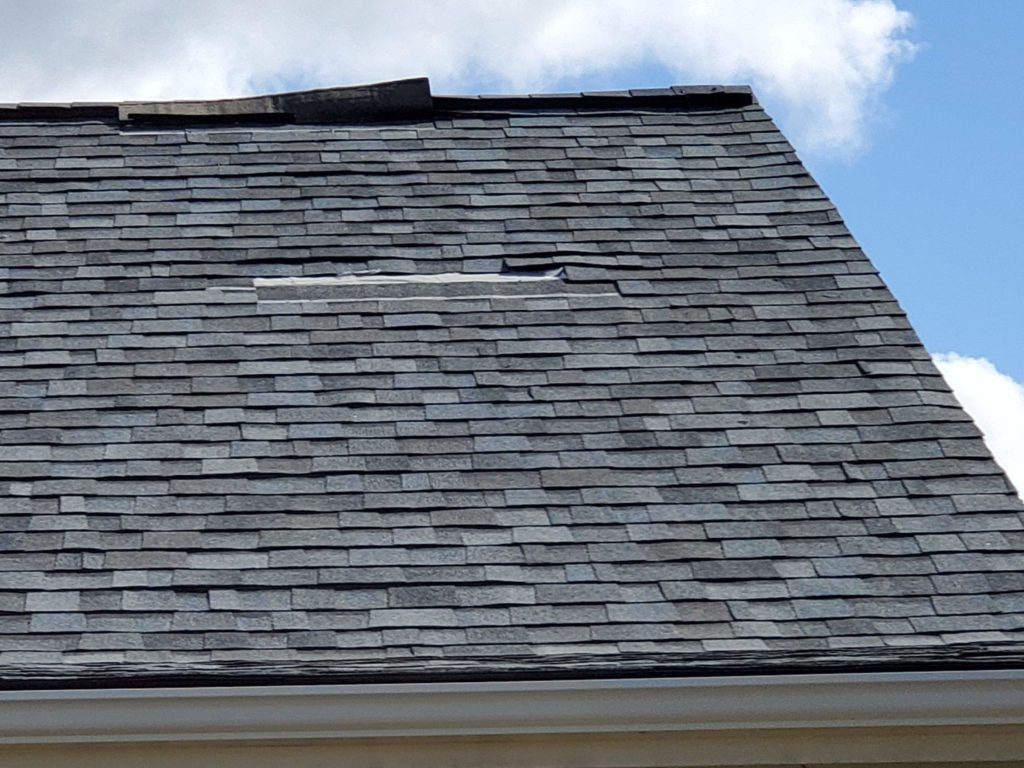
Has the wind or storms torn away shingles? Maybe the weight of snow was enough to pull away already loose or unsecured shingles? Do you have multiple layers of shingles on your roof making for a less secure installation?
Missing shingles are a sure way for things to start to go wrong and water to find it’s way in. Missing shingles are generally a fairly easy repair if it’s just a couple in one area but when it’s a shingle or two here and there all over the roof or over a large section, it’s time to consider a roof replacement. If you’re seeing a few missing in numerous places, it’s possible adhesives and nails have weakened and more shingles are getting ready to let go. If you have missing shingles lower on the roof close to eaves, it could also be a sign of previous ice damming or rotted wood beneath.
Is it growing?
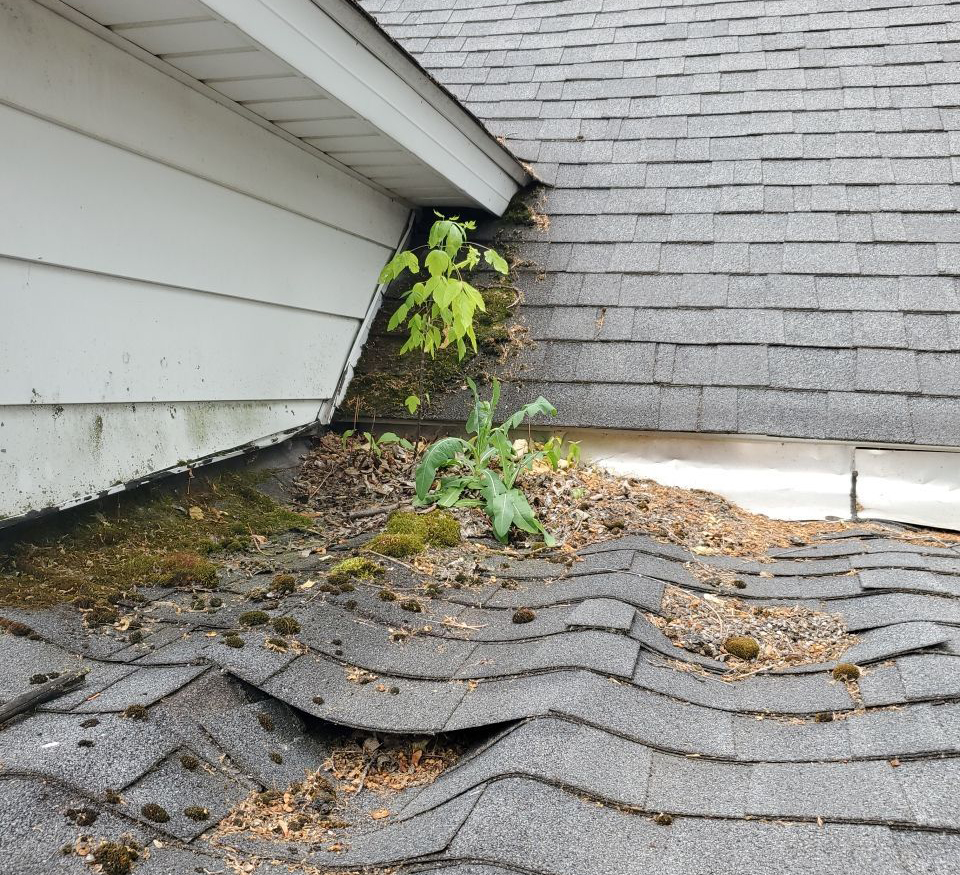
Is there moss growing on your roof? Algae? Small trees? If there’s vegetation, then there’s cause for concern. Typically in places on a roof where there’s not as much sunlight and plenty of moisture and organic debris, plants, lichen, and moss can get a hold and those tiny roots creep under your shingles. Sometimes it starts from poorly draining eaves. In some instances it’s an already low spot. As they grow and multiply, they in turn hold more water. Roots spread. Before you know it, the water is following down and getting to the wood beneath. Vegetation can strip oils from your shingles, absorb and hold water, leaving them susceptible to sun damage and granular erosion causing cracking and curling.
Regular roof maintenance and newer algae-proof materials can stop it before it ever becomes a problem. But when it’s in some little corner it can go undetected if a homeowner doesn’t take the time to look over their roof once in a while. Moss for instance can grow under your shingles for some time before it pushes out into the sunlight where you can see it. By the time you see it from the ground, it already has a good hold where you can’t see it.
These are just the most common things to look for. There are plenty of other reasons you should have a professional inspect your roof when you are unsure of it’s health and age. Contact us for an appointment and we’ll be happy to come inspect your roof!
Click here to see the average weather in Michigan.

